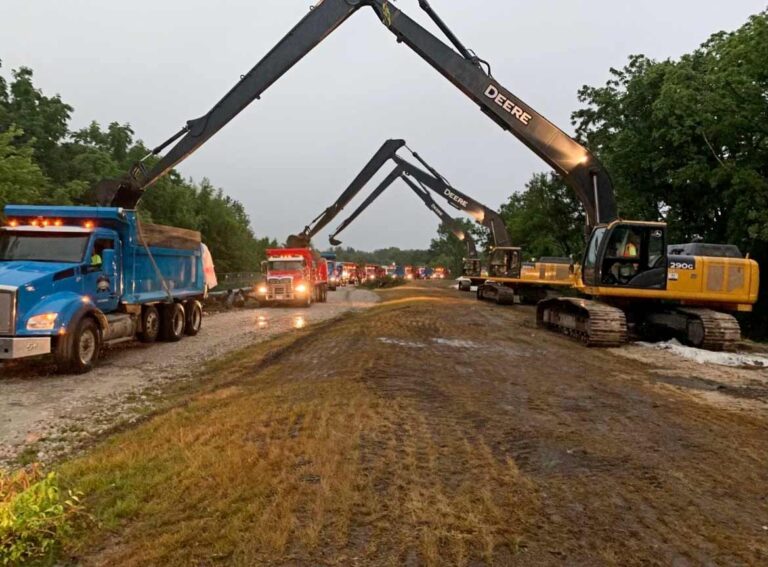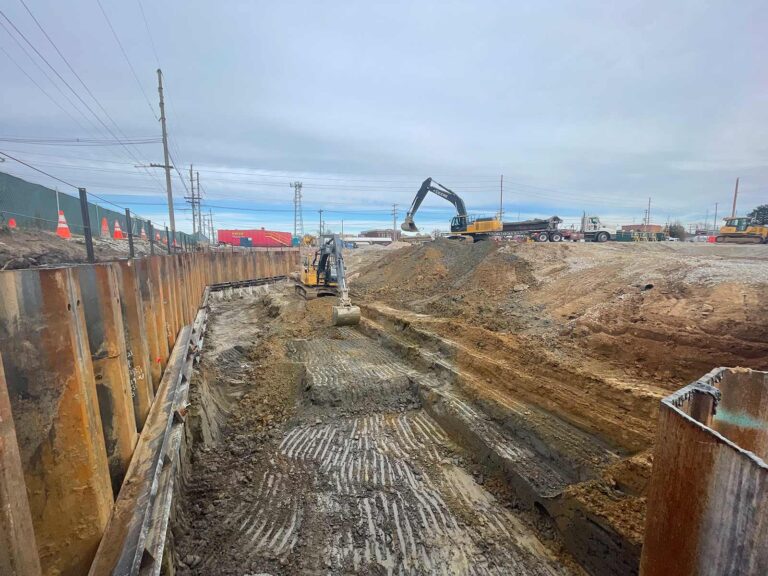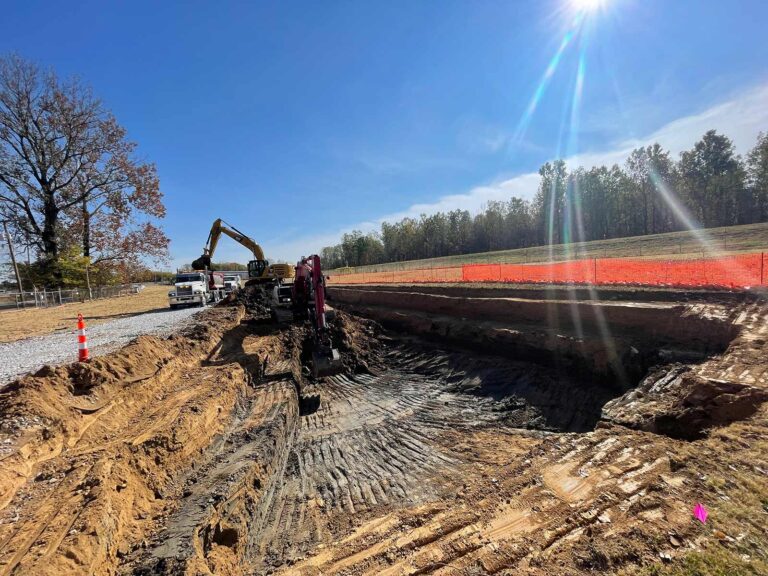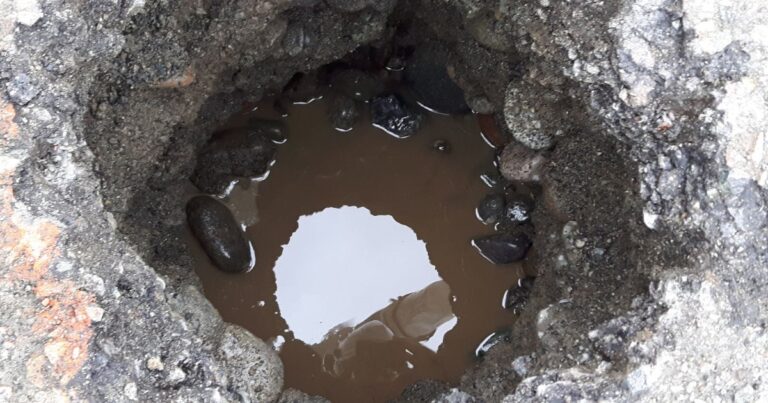Soil Excavation
O6 Environmental Soil Excavation protects the health and safety of communities and ecosystems.
Sometimes referred to as “dig and haul,” soil excavation is the process of exhuming contaminated dirt, clay, sand, and gravel for treatment or disposal at a landfill. After determining the lateral and vertical extent of contamination, our experts remove all polluted subsoil, restoring the site for future development according to the strict guidelines laid down by the EPA and local authorities.
Benefits of Soil Excavation
Fast and Permanent
By directly removing problematic material, soil excavation provides a rapid and enduring solution for sites with toxic and hazardous substances.
Protects the Environment
Eliminating contaminated soil prevents harmful chemicals from leaching into the groundwater, preserving local ecosystems and ensuring drinking sources remain unpolluted.
Streamlined Site Management
Permanently removing contaminants significantly reduces the need for long-term site monitoring and management. The process not only reduces sustained costs but also minimizes future intervention, restoring peace of mind and opening the land to consistent use.
End-to-End Management
O6 administers every aspect of excavation, ensuring all hazardous materials are unearthed, stored, and treated in controlled environments. Once our team has finished digging up the contaminated soil, we oversee its transportation to a designated waste disposal or remediation center, preventing any further spread or secondary contamination.
Restorative Impact
After excavation, sites are replenished with uncontaminated soil, transforming previously unstable or neglected land. These rejuvenated areas can either be returned to their original state or reshaped for fresh development.
Safety and Compliance
Soil remediation and disposal is a cost-effective method for industrial clean-up that often leads to acquiring a 'No Further Action' (NFA) status from the EPA, which eliminates the need for further investigation or additional action by developers and municipalities.
Sites Requiring Soil Excavation
Industrial Complexes
Petroleum products and heavy metals are common in the manufacturing sector. Older factories often harbor residual materials from past processes, making them prime candidates for soil remediation.
Brownfields
Previously developed land that has been abandoned or underutilized due to pollution or industrial waste, generally requiring soil remediation before reuse or redevelopment.
Derelict Gas Stations
These sites normally contain residual petroleum hydrocarbons, especially if they were kept in underground storage tanks. Unless removed, steel and aluminum tanks are susceptible to corrosion and leakage.
Military Bases
In many cases, military exercises and training activities leave chemicals, fuel, and munitions behind in the soil.
Dry Cleaning Facilities
Petroleum and chlorinated solvents commonly used in dry cleaning can pose a threat to local ecosystems. If released, they can linger for years in the surrounding soil and groundwater, due to their resistance to degradation.
Railroad Yards and Tie Treating Plants
Creosote and other heavy oils used as wood preservatives are a frequent cause for concern in facilities involved in railroad operation and construction.
Residential Communities
Older neighborhoods built near or on former industrial sites, may require soil remediation to ensure residents are not exposed to dangerous chemicals.
Soil Excavation Equipment and Techniques
Soil excavation is carried out with a wide range of construction equipment, chosen according to the size and depth of the contaminated area, as well as the presence of buildings or other permanent structures that might obstruct access to the site. This machinery may include:
- Excavators
- Backhoes
- Bulldozers
- Skid Steer Loaders
- Dump Trucks and Haul Trucks

The equipment selected depend largely on the type of excavation required to cleanse and restore the site.
Bulk Excavation
Removes large quantities of rock and soil from a contaminated area.
Trench Excavation
Removes material from a narrow opening in the ground, to restore sites with a deep but limited field of contamination.
Selective Excavation
Rather than digging up the entire area, localized hotspots are removed, leaving the rest of the site intact.
Vacuum Excavation
A minimally invasive procedure that removes dirt, mud, and slurry by sucking it up through a high-powered vacuum. Frequently used in sites with utility lines and underground structures.
Remote-Controlled Excavation
Allows technicians to operate equipment at a distance in order to clean areas that would be otherwise inaccessible or too dangerous to enter.
Earth Retention Systems

Collapsing soil is a common danger in many excavation projects, especially those in urban settings or close to existing structures. In order to ensure worker safety and the stability of the surrounding ground, O6 utilizes a range of protective systems to prevent cave-ins during excavation.
- Sheet Piling: Teams create a continuous wall of long, vertically driven sheets of metal or vinyl in order to prevent the collapse of surrounding soil.
- Soldier Piles and Lagging: Vertical beams (soldier piles) are driven into the ground at regular intervals, with horizontal lagging (typically wood or concrete panels) placed between them. A quick and cost-effective method of retaining soil.
- Anchored Retaining Walls: Used to support heavy loads, these walls use anchors drilled into the retained soil for added stability.
Temporary Enclosure Structures
Our team is adept at constructing temporary enclosures to contain and manage contaminated soil, ensuring no pollutants escape the designated excavation site. These structures serve as a staging ground for processing and storage of tainted soil.
Their modular design allows them to be set up and expanded rapidly, in order to accommodate a wide range of projects and prevent further contamination of the surrounding areas and the broader environment.
Call O6 Environmental for Soil Excavation

Soil excavation is a fast and effective method of environmental remediation. Digging, hauling, and treating polluted soil restores contaminated land, opening the way for future development while eliminating risks to public health and the ecosystem.
O6 Environmental provides comprehensive excavation services to communities and land developers. Our experts manage every stage of excavation and disposal, from initial sampling and analysis to the submission of remediation completion reports.
Contact us today to learn how we can deliver a custom and practical solution for your project.
Latest News
 Asbestos & Lead Abatement During Industrial Demolition: Steps to Compliance
Asbestos & Lead Abatement During Industrial Demolition: Steps to ComplianceBefore initiating any industrial demolition, facility owners and contractors must assess for legacy hazardous materials—including ...
Read Article Groundwater Remediation Techniques: What Actually Works Long-Term
Groundwater Remediation Techniques: What Actually Works Long-TermGroundwater contamination can linger for decades—threatening drinking water sources, ecosystems, and regulatory compliance. Whether caused ...
Read ArticleTell Us Your Challenge. We’re Here to Assist.
"*" indicates required fields